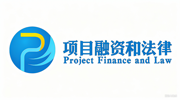What motivates the private sector to invest in Africa’s infrastructure
Summary
- Overall investment value to infrastructure projects in 2022 dropped by 10 percent from those realised in 2021, a sign of the extent to which “black swan” – or, highly unexpected – events have hit government spendin
Nairobi. Governments that have traditionally funded major infrastructure projects are experiencing unprecedented fiscal stress. But from the tiniest to the largest economies in Africa, private capital is riding to the rescue. The continent’s unlikely ally? Covid, according to a new report.
A new World Bank report shows that the rise of private participation is driving infrastructural developments in Africa at a time when economic headwinds have strained national budgets meant for development.
The report, ‘Private Participation in Infrastructure (PPI) 2022’, shows that the number of projects and countries benefiting from private participation in infrastructure has risen to a record high.
“This can be attributed to the flow of investment levels surging in Africa during the pandemic when more popular investment regions such as East Asia and the Pacific and Latin America and the Caribbean were facing the brunt of the crisis,” the authors write.
Overall investment value to infrastructure projects in 2022 dropped by 10 percent from those realised in 2021, a sign of the extent to which “black swan” – or, highly unexpected – events have hit government spending just as investment in infrastructure was ramping up on the continent, with major projects in even the smallest economies attracting investment.
“In 2022, 37 projects in Sub-Saharan Africa received investments totalling $4.9 billion, which represented 0.25 percent of the region’s GDP. This marked a 10 percent decrease in investment levels from the previous year,” the authors said.
The report acknowledges the spread of the projects reaching 19 countries in sub-Saharan Africa, the highest recorded number in the database’s history.
The largest investments were made in the power sector, with a significant portion of investments directed towards South Africa, which had experienced low levels of investment.
Other PPI projects were launched in countries including Benin, Botswana, Burkina Faso, Cameroon, the Democratic Republic of Congo and Côte d’Ivoire, Gabon, Kenya, Lesotho, Madagascar, Malawi, Mali, Mozambique, Nigeria, Senegal, Togo, Uganda, and Zimbabwe.
Egypt was responsible for 85 percent of the $2.0 billion that flowed into PPI investments in North Africa and the Middle East, with Morocco and Tunisia seeing more modest PPI investments in 2022.
According to the report, private infrastructural project investors targeted countries with high growth potential, including small and middle-income earners.
Some, however, were out to leverage sector-specific opportunities, with emerging sectors such as energy and ICT receiving significant attention.
Other common sectors include transportation, municipal waste, water and sewerage management projects.
South Africa saw significant investments in the power sector because “the government has lifted embedded generation requirements, introduced emergency programs for the state-owned power utility agency, Eskom, and eliminated the requirement for a license for power generators.”
The state’s 2022 pledge to double its procurement of renewable energy to more than 5,000 MW also encouraged private investors to the power sector. In some countries, private participation in infrastructure investments had significant economic value besides the long-term impact they will have when the different infrastructures are operationalised.
“Benin and Lesotho, for instance, saw their first PPI transactions in the past ten years,” the authors express, noting that most investment deals in the two countries were in the renewable energy sector.
In Benin, the opening of its energy market to independent power producers saw a consortium of GreenYellow and Egnon commit to developing solar PV plants with a 50MW total capacity of more than $421 million.
In Lesotho, the Electrification Financing Initiative invested in a project-finance vehicle led by OnePower, an electricity access provider, to construct 11 solar mini-grids for rural communities. Senegal is also ranked top among the 18 countries of the International Development Association – a World Bank wing that supports countries with some the lowest GDPs – having secured PPI investment worth $1,283 million last year. The West African country’s PPI investment in 2022 was from 2 projects, the Malicounda dual-fuel power plant and the port of Ndayane, totalling $1.3 billion.
According to Africa development bank Vice President for Private Sector, Infrastructure and Industrialization, Solomon Qaynor, African governments currently have little fiscal room owing to “black swan” events that have occurred in the last three years. (Bird)
Therefore, “we have to really look at alternatives to leverage limited fiscal space and also innovative ways to crowd in the private sector,” he said in a statement.
Even as Africa looks beyond national budget allocations to fund infrastructural development, Quaynor explained that countries can leverage alternative infrastructural funding sources to accelerate growth.
These include “assets managed by African sovereign wealth funds, African pension funds and African life insurance pools. They are all estimated at over $2 trillion,” he said.






